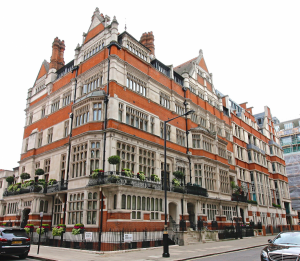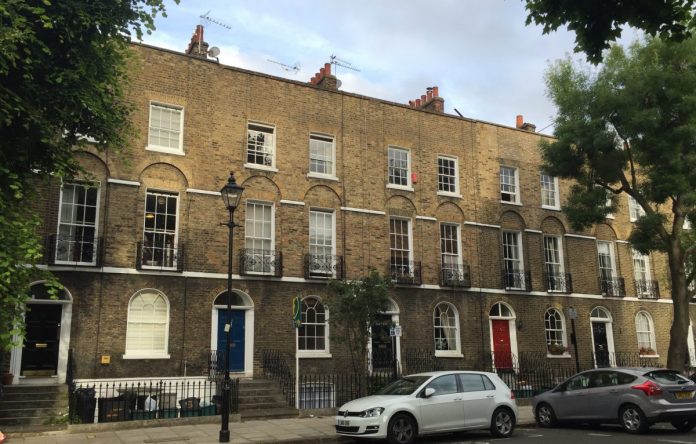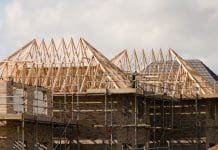The YIMBY campaign aims to get more of the right homes in the right places by giving individual streets and communities radical new powers over planning. London YIMBY’s John Myers explains
If you had half an hour with the Prime Minister, what would you suggest to get more homes of the right types in the right places? If YIMBY is the opposite of NIMBY, what should a YIMBY campaign for?
That’s what our London YIMBY group asked when we launched last year. We looked at hundreds of ideas, but most had little appeal for a Prime Minister who didn’t want to lose her job quickly, either through a general election or an internal party coup.
Getting more well-designed homes built near existing or new infrastructure would substantially boost economic growth in these uncertain times – not to mention helping to create a much fairer society where everyone is better off.
Can that be done while making local residents happier and winning votes for the government that does it? We think so.
We think long-lasting, powerful change is most likely when new developments involve and benefit local communities and residents.
Our first London YIMBY report lists three reform ideas that, so far, we think have the best chance of happening and being effective. Please let us have your constructive suggestions and better ideas. You can contact us at the details at the end of the article.
 Three ideas
Three ideas
1. Better streets
Let individual streets vote to give themselves additional permitted development rights to extend and/or replace, and to choose a design code for façades to ensure that residents will be happy with the final result. We suggest a maximum height of six storeys, with specific rules about back gardens, basement extensions and houses on street corners.
2. Better green belt
Give individual parishes and neighbourhood areas the power to improve their own green belt by negotiating with landowners and amending green belt designations, with landowner consent, in return for an improved environment and other benefits for the community.
3. Devolution
Devolve more power, including power to change planning law, to mayors and other local authorities, and in particular let them adopt options 1 or 2 for all or parts of their area.
The hard part is politics
The biggest problem with substantially improving the supply of homes and infrastructure is that every government for the last 40 years has been scared of the political consequences of doing so. In high demand areas, politics is the biggest obstacle. You have to solve the politics to end the crisis.
Homeowners are a majority in this country, and they tend to vote more than tenants. Private interviews with politicians show they are painfully aware of that. Many housing reform proposals have sadly not addressed that basic challenge.
That means any politically practical reform must:
1. Not cause an overnight house price crash, or politicians will be afraid to do it.
2. Ensure many local people see fast, large and continuing benefits from it, so that they actively fight for the reform.
3. Change the existing system no more than needed, to make the reform as politically easy as possible.
A reform has most chance of passing if at least some homeowners like it. Reforms that make nearly everyone better off are the easiest to pass. Reforms that make every existing homeowner worse off are politically much harder.
Problems with the current system
Who is completely happy with the current planning system? Many planners feel under-resourced and overstretched. Planning consultants could be far more effective and better paid if they could get more built by working with communities. Builders suffer from the incredibly high costs of sites. Architects want more freedom to design amazing buildings. Homeowners often want bigger homes. Grandparents and parents worry about where their children and grandchildren will live. And private tenants suffer most of all.
New greenfield developments are often highly unpopular. We are losing playing fields and green spaces in existing cities. It is too easy to build unattractive buildings on valuable green space, and too hard to build beautiful new places on uninteresting scrubland near public transport.
Most of all, it is far too difficult to enhance existing streets, with the support of local residents, making them and nearly everyone else better off.
Because the current system has been so bad at ensuring enough high quality development that benefits local people, the lowest-risk choice for politicians and officials has generally been to restrict building. We need an enhanced, better planning system to get from a vicious to a virtuous circle, giving real power to local communities.
High quality, well-planned growth in areas of highly fragmented ownership is the hardest. Getting many people to agree is difficult, especially where their interests are wildly different and where change can have a huge impact. Designing a planning system to solve that political problem is incredibly difficult. That’s the fundamental reason why we have failed so badly to build what we should. No city around the world has perfectly solved the problem.
 How much better could we do?
How much better could we do?
The housing crisis is the major cause of inequality. It causes stress, insecurity, ill health and shortened lives. It deprives the young and the poor of opportunities and reduces social mobility. Fixing it would improve our society profoundly.
But that is not all. There is evidence that fixing the UK’s broken supply of housing and infrastructure over a couple of decades could boost GDP by up to 30%. If that is true, it means our self-inflicted shortage of homes and other infrastructure has caused more damage to GDP than either World War or any other single event since the Black Death of 1348-9.
Acknowledging that devastating act of economic self-harm will help create a strong consensus among planners, industry and the public that change is urgent and necessary.
A wave of high quality, new construction is a time-honoured way to boost economic growth and a natural response to low interest rates. It will create tens or hundreds of thousands of new jobs and opportunities that will give people hope again, particularly the young, the poor and those who have lost their jobs through the decline of manufacturing industry. It is a win-win option, so long as you can keep local residents happy.
Well-designed density
The 1947 Act was never really intended to allow large-scale, attractive, popular densification of parts of existing cities with many different owners and interests, not least because that was not seen as needed at the time. It is long past time to create a working way to do so, but it is not easy.
Half of the homes in London are in buildings of only one or two storeys, and the facts for many other cities are similar. The Georgians and the Victorians often built far more densely and more attractively than current suburbs. We could achieve much more by copying some of the best practices of our predecessors, while avoiding their mistakes.
HTA’s ‘Supurbia’ demonstrates how it is physically possible to fit far more square footage into an existing plot. In places of high demand, you can often increase the built square footage of a typical suburban plot by five times, doubling or trebling the value for the existing homeowner, by allowing replacement with six-storey terraces and mansion blocks with attractive façades. The challenge is to do it with the support of existing residents.
Many people are happy with their current detached or semi-detached suburban houses. Surveys show they could often be even happier if given a way to improve their street with attractive, well-designed densification. The new permissions to build would in many cases substantially increase the value of their own existing properties and, over time, create many more homes – through extension and subdivision, through replacement with higher terraced housing split into maisonettes, or by combining several existing plots to build mansion blocks of flats.
 The details
The details
Affordable housing requirements are much more effective when they are fixed clearly in advance, so that they are incorporated in any price paid for the land. Contributions could also be required for other infrastructure as needed.
For the ‘better streets’ idea, we suggest that an individual street should be able to vote on new permitted rights to extend and/or replace existing buildings, requiring a double two-thirds majority of existing residents and of residents who have been there for at least three years to prevent gaming of the system. We also suggest strict protections for other houses not on the street, a limit to the amount of back gardens that can be used, and rules about houses on street corners and basement extensions.
Interviews suggest that allowing the street to vote on its own design code for façades is key to get people comfortable with the idea. Create Streets has shown the strength of people’s concerns about the appearance of new construction.
No individual homeowner has to use the new permissions, of course. They can just sit on them – or team up with a small builder, or sell for a substantially increased value when the time is right for them. Over time, the new flats and terraced houses will create more homes for people to live in, making nearly everyone better off.
Who are YIMBYs?
The London YIMBY campaign launched last year as part of the rapidly growing international YIMBY movement, which took off in the San Francisco Bay Area two years ago. This year’s second YIMBY conference, held in California, had people from YIMBY campaigns in over 30 different cities.
In the UK, the London campaign has rapidly been followed by campaigns in Oxford and Cambridge, two other needlessly unaffordable cities. Groups in other cities aim to launch soon.
The campaigns are generally non-partisan, uniting young and the old, left and right, to end the housing crisis as urgently as needed.
Please help
We need your expertise and support! Please get in touch to help us with introductions and policy, to support a nearby YIMBY group, or to find out how to start a YIMBY group near you. Together we can build a better country.
John Myers
Co-founder
London YIMBY
Twitter: @londonyimby
Facebook: londonyimby














